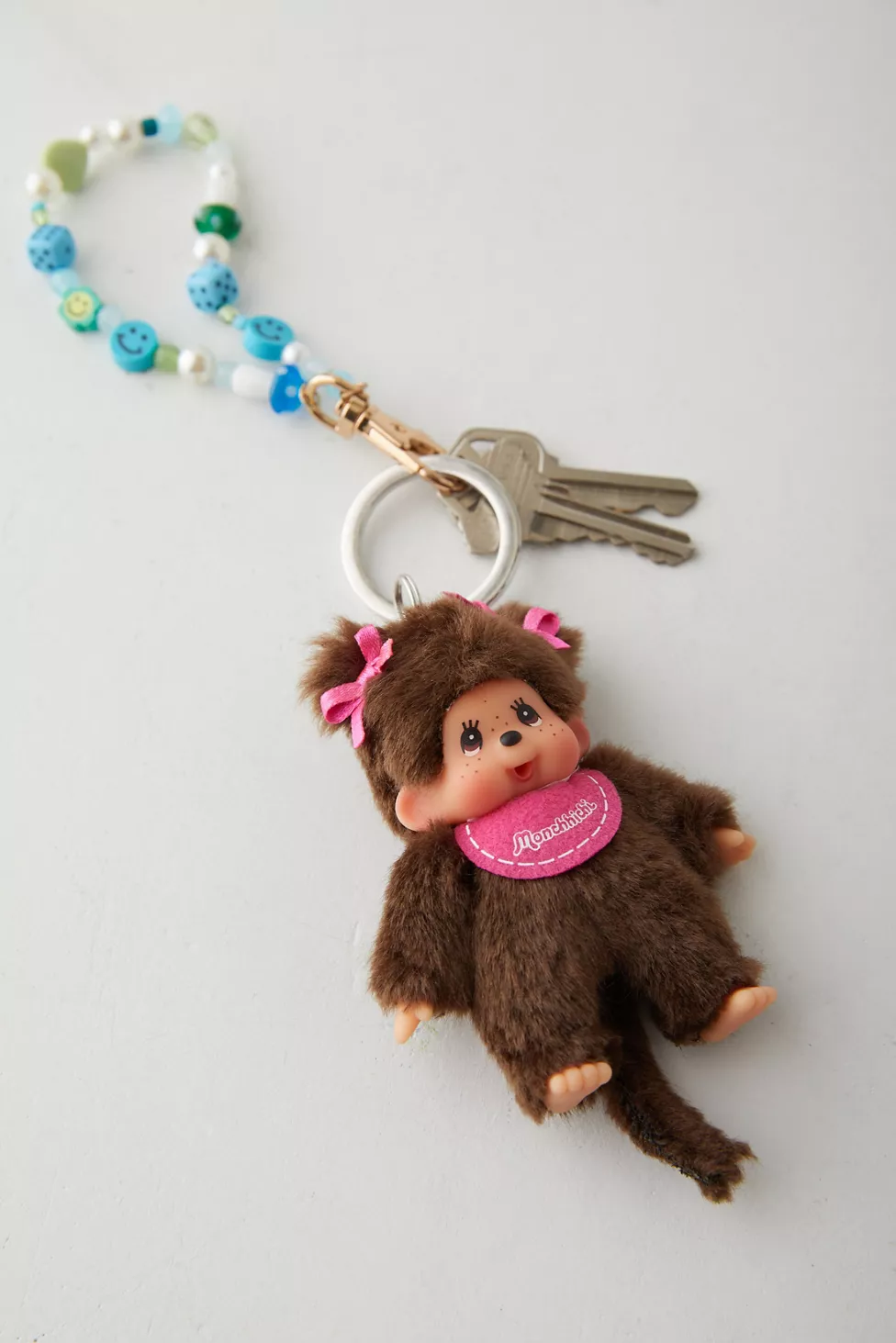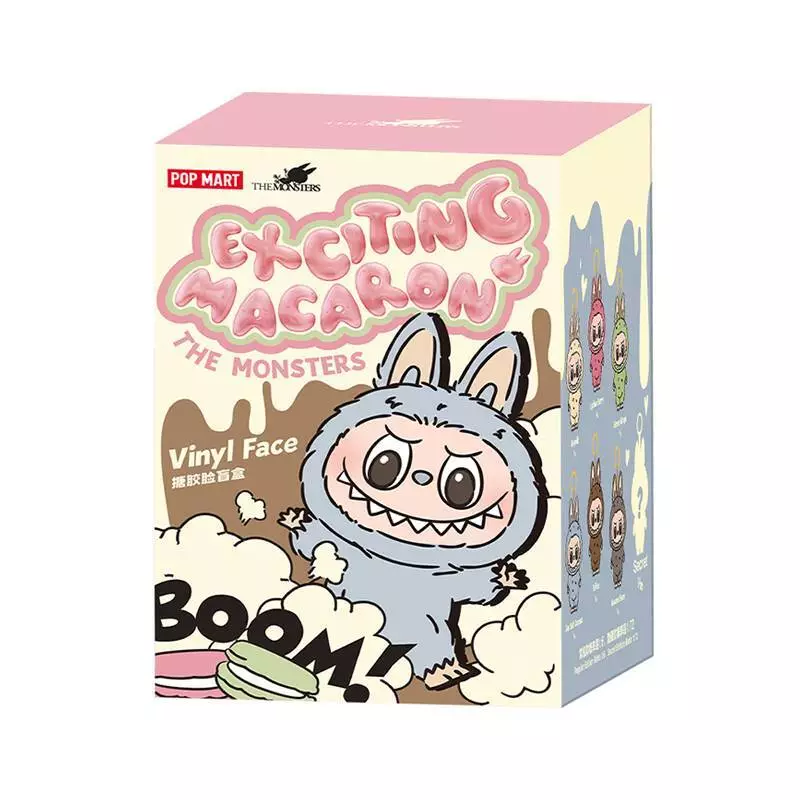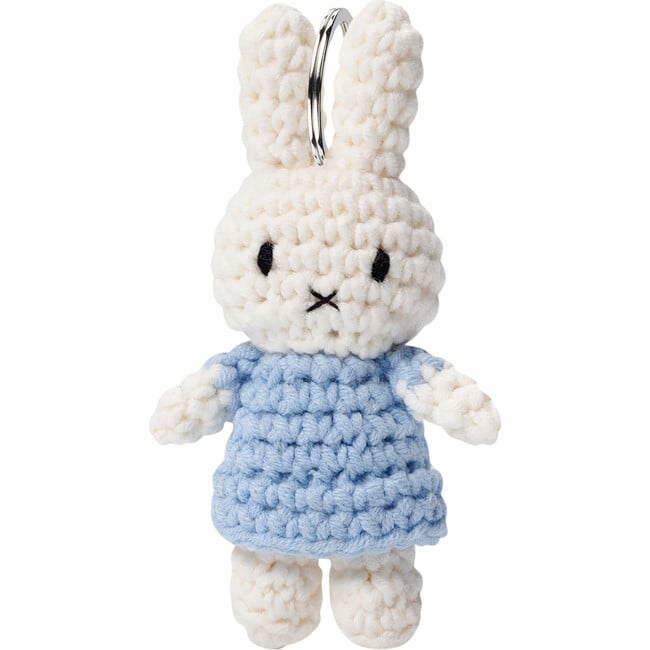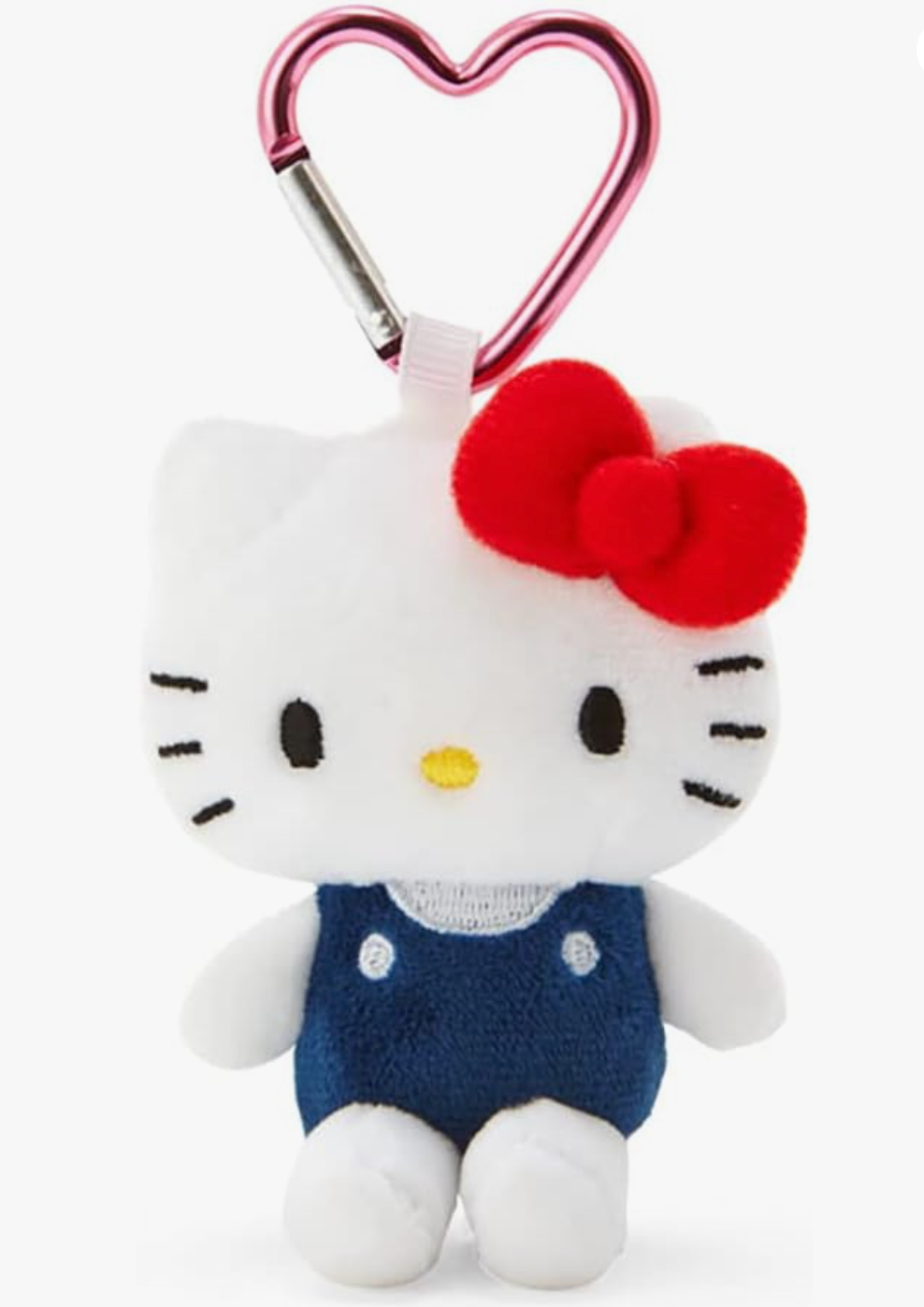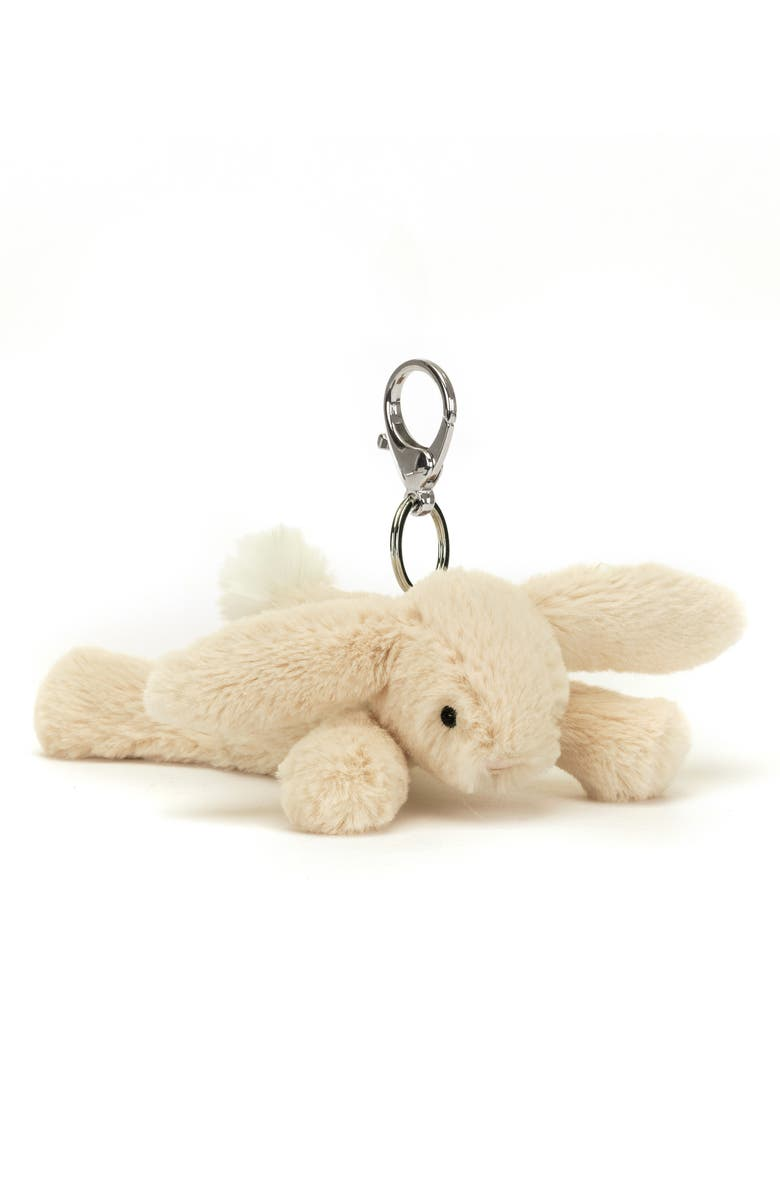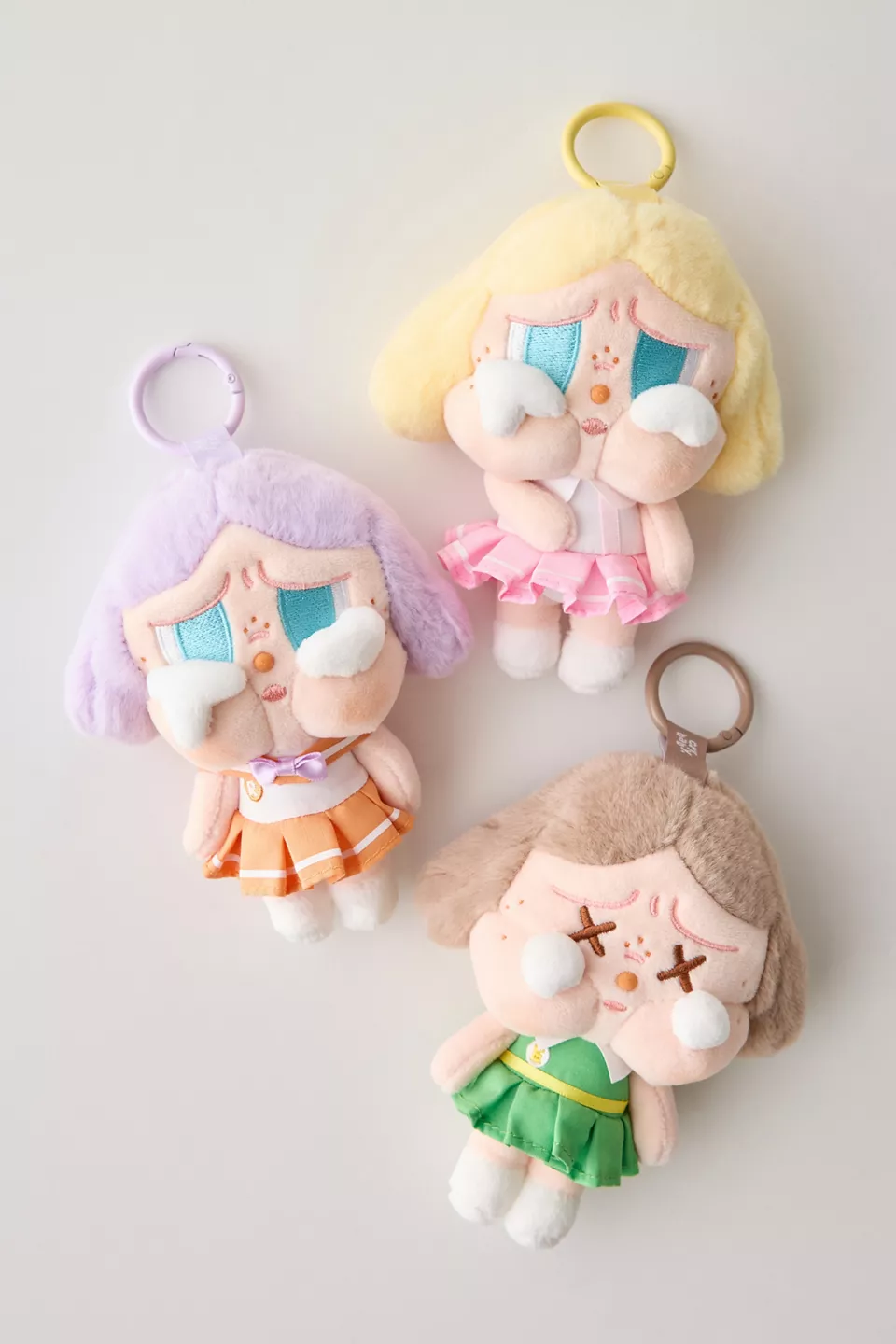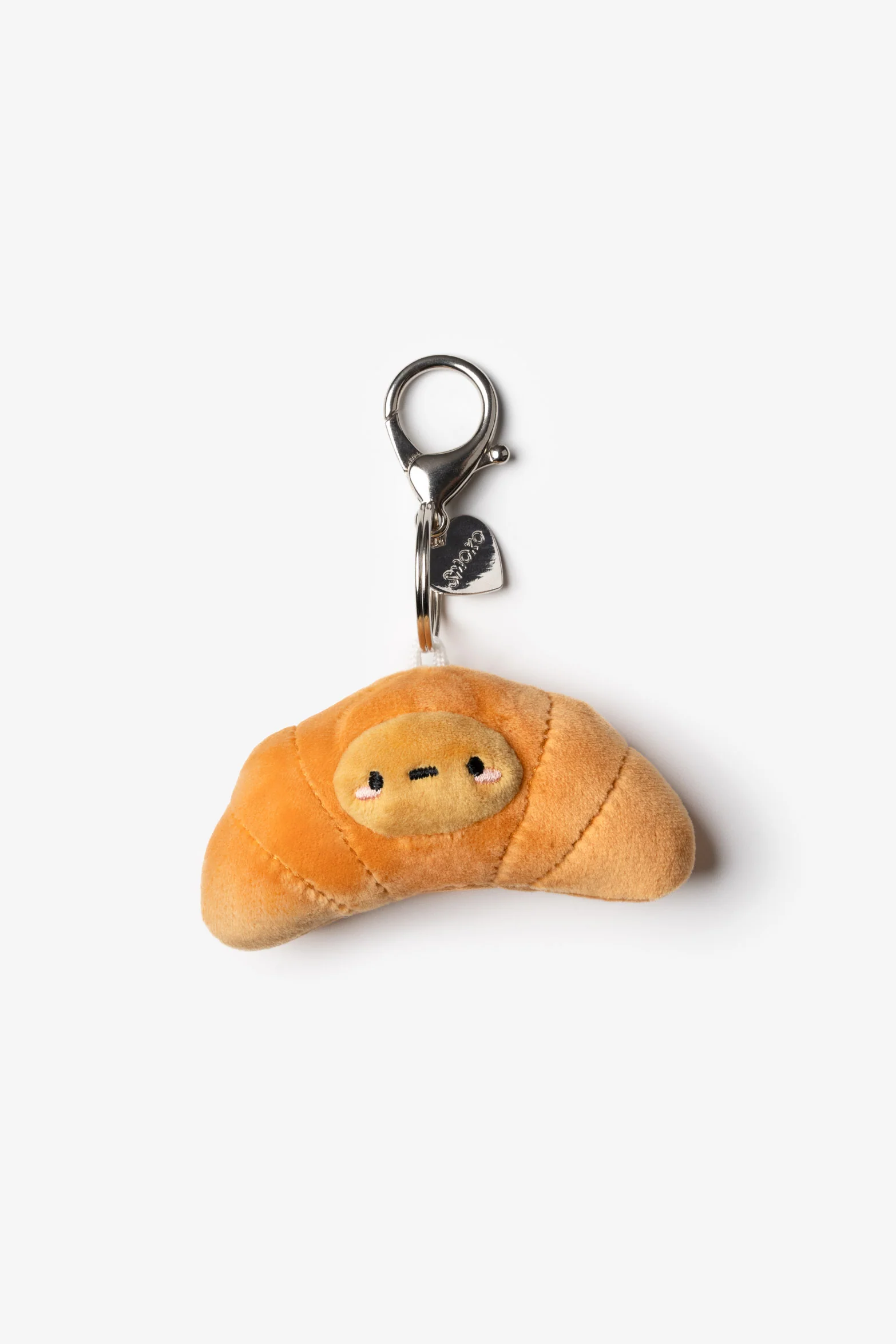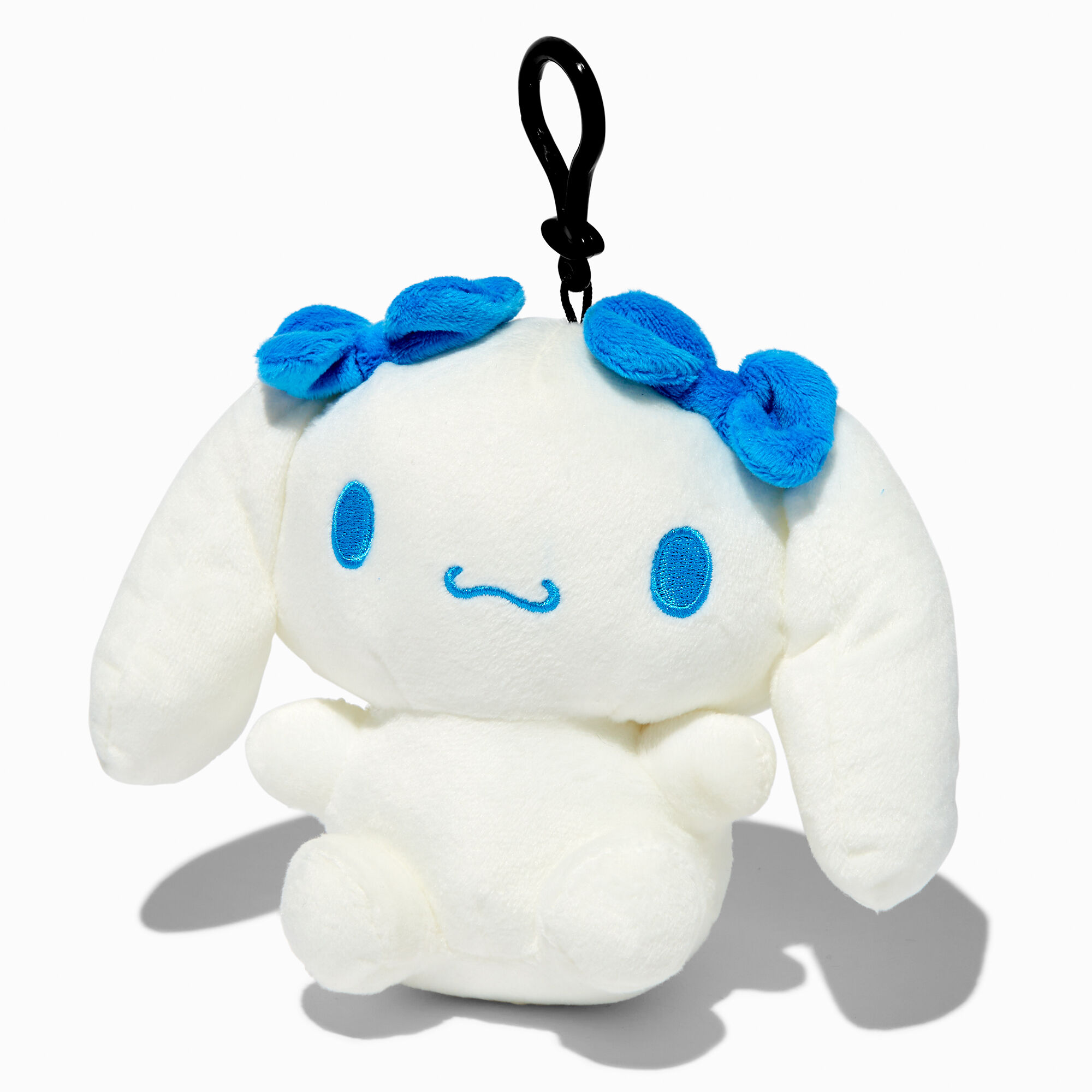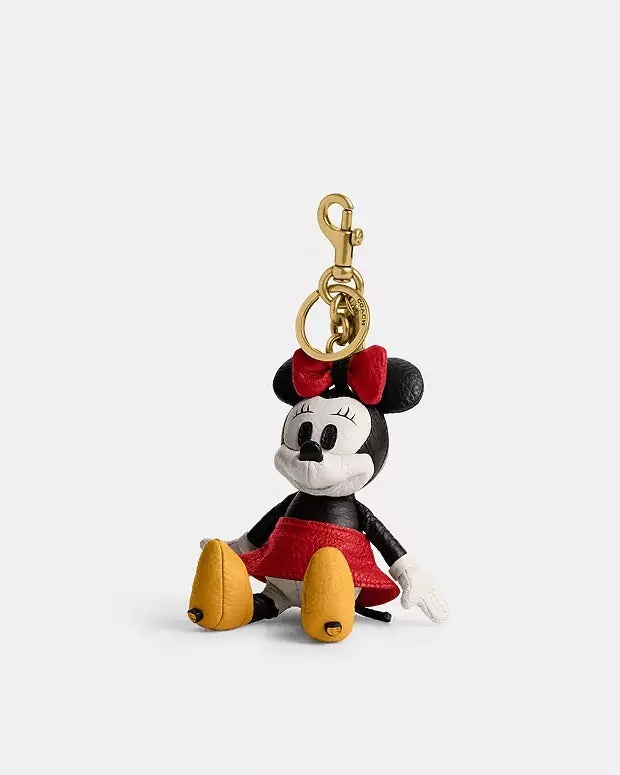Nostalgic Plushie Bag Charms & Labubus Are Trending — Fans Explain Why
All linked products are independently selected by our editors. If you purchase any of these products, we may earn a commission.
“Ugly-cute.” “A sense of nostalgia.” “A gremlin on LSD.” “Either you get it or you don’t.” There's no denying the global cult following that plushie bag charms, and the TikTok-viral Labubu, have garnered — and these are just some of the standout responses fans and collectors shared with me when discussing the trend.
Personalization has made a major comeback, and handbag straps heavily adorned with bag charms are one of the easiest and most joyful ways to customize our everyday pieces. But rather than luxury charms from Loewe, Prada, and Gucci, furry animal-like plushies (like Monchhichi, Miffy, Hello Kitty, and Crybaby) are the hot style, with Labubu being the most viral, coveted plushie charm you can own right now.
I’m talking about the furry, wide-grinning creatures — aka The Monsters — designed by Hong Kong-born illustrator Kasing Lung. Originally a book series character, Labubu became a physical plushie when toy company Pop Mart created them in 2019. They’re sold as limited-edition “blind box” collections (like the popular Macaron series) both online and in Pop Mart stores, so you can never be sure the exact design you’re going to get. “It’s like an accessible lottery ticket. You know you’re gonna win, and it’s gonna be cute,” says Cameron Tarzaban, who works in the cannabis industry. (However, some fans search for specific styles on StockX and eBay to secure the exact design they want.)
But how and why did they get so popular? What’s their appeal? After seeing a London-based artist wearing an orange Monchhichi charm on her tweed Chanel bag, I knew I needed to investigate this quirky high-low trend. So I spoke with several avid plushie collectors (including Labubu loyalists) and bag charm lovers to learn more.
Personalization has made a major comeback, and handbag straps heavily adorned with bag charms are one of the easiest and most joyful ways to customize our everyday pieces. But rather than luxury charms from Loewe, Prada, and Gucci, furry animal-like plushies (like Monchhichi, Miffy, Hello Kitty, and Crybaby) are the hot style, with Labubu being the most viral, coveted plushie charm you can own right now.
I’m talking about the furry, wide-grinning creatures — aka The Monsters — designed by Hong Kong-born illustrator Kasing Lung. Originally a book series character, Labubu became a physical plushie when toy company Pop Mart created them in 2019. They’re sold as limited-edition “blind box” collections (like the popular Macaron series) both online and in Pop Mart stores, so you can never be sure the exact design you’re going to get. “It’s like an accessible lottery ticket. You know you’re gonna win, and it’s gonna be cute,” says Cameron Tarzaban, who works in the cannabis industry. (However, some fans search for specific styles on StockX and eBay to secure the exact design they want.)
But how and why did they get so popular? What’s their appeal? After seeing a London-based artist wearing an orange Monchhichi charm on her tweed Chanel bag, I knew I needed to investigate this quirky high-low trend. So I spoke with several avid plushie collectors (including Labubu loyalists) and bag charm lovers to learn more.
AdvertisementADVERTISEMENT
Most interviewees (ranging between Gen Z and millennial in age) discovered Labubus around springtime 2024, seeing them in TikTok unboxings and hauls or being toted around by pop megastars. “People like Lisa and Rihanna — people who are pop culture phenoms and very well-dressed celebrities — having their co-sign obviously is going to make things cool,” says New York-based beauty and style writer Tayler Adigun, who happily got the same pink Lychee Berry style that Rihanna was pictured wearing on her Louis Vuitton Soft Speedy bag.
Social media manager, Blossom Ruby Brown, similarly says: “I got into Labubu right after Lisa started posting about them. I'm not a K-pop girl, but it was through the virality that Lisa brought to Labubu that then brought it to my For You Page.”
Many have been interested in bag charms for even longer, though, with several interviewees collecting them while traveling to places like Japan, France, South Korea, and Taiwan. Freelance fashion writer Shelby Ying Hyde noted that bag charm personalization has been part of Asian culture for a long time, and explains: “I went to Japan and that further progressed my interest in this. I noticed that everyone had some sort of plushie keychain, whether they’re Gen Z or an older man going to the office. It seems to be a way for people to show a level of individuality and personality.”
Social media manager, Blossom Ruby Brown, similarly says: “I got into Labubu right after Lisa started posting about them. I'm not a K-pop girl, but it was through the virality that Lisa brought to Labubu that then brought it to my For You Page.”
Many have been interested in bag charms for even longer, though, with several interviewees collecting them while traveling to places like Japan, France, South Korea, and Taiwan. Freelance fashion writer Shelby Ying Hyde noted that bag charm personalization has been part of Asian culture for a long time, and explains: “I went to Japan and that further progressed my interest in this. I noticed that everyone had some sort of plushie keychain, whether they’re Gen Z or an older man going to the office. It seems to be a way for people to show a level of individuality and personality.”
So how do people style their Labubus and the like? Culture freelance writer Sofia Viera shares: “Last year, I was going into the office again so I needed a work bag, but it wasn’t going to be boring because I'm not boring. My first one was a backpack with a Sanrio plushie.” They also explained that they intentionally buy specific plushies for specific bags, noting that they pair especially well with puffy Baggu bags.
Houston-based senior sales engineer Alexa Peavey does a few things with her Labubu: attaches it to her travel backpack, to her vintage Fendi bag, or ties a skinny silk scarf into a bow onto it. Meanwhile, global PR and event planner James Hagenberg adds his Labubu, Tamagotchi, and additional charms onto a carabiner, which he swaps between bags or his pants’ belt loops.
Similarly, Tarzaban, enjoys attaching their Labubus onto their belts, saying: “Once you break free of the mold that there are rules, you can put that Labubu anywhere, and that’s really freeing.”
Houston-based senior sales engineer Alexa Peavey does a few things with her Labubu: attaches it to her travel backpack, to her vintage Fendi bag, or ties a skinny silk scarf into a bow onto it. Meanwhile, global PR and event planner James Hagenberg adds his Labubu, Tamagotchi, and additional charms onto a carabiner, which he swaps between bags or his pants’ belt loops.
Similarly, Tarzaban, enjoys attaching their Labubus onto their belts, saying: “Once you break free of the mold that there are rules, you can put that Labubu anywhere, and that’s really freeing.”
AdvertisementADVERTISEMENT
But there’s more context for why these plushies have amassed so much popularity and global fascination. And one of the major reasons seems to be a craving to reconnect with our inner child. “We lose that innocence and magic that we had as kids. So these collectibles and these plushies kind of enhance that feeling for us again,” says New York-based editor Jane Kim. “I feel like we're able to bond and connect and giggle, and it just brings that child-like bond of trading toys.”
Nostalgia, and the mood-boosting feelings that come with it, is therefore another contributor to this trend’s success. “As someone who grew up in the Claire's and Icing era, it feels very nostalgic,” says Ying Hyde.
London-based content creator and writer Amy Stockwell — who had Monchhichi-designed nails at the time of our chat — adds: “I think for a lot of people it gives them a sense of nostalgia. I love that people are discovering collecting again, or a fascination with toys.”
Likewise, publicist Simone Francese — who previously ran a Japanese nail art salon and discovered Monchhichis and Sonny Angels through her technicians and customers — explains: “I looked at it and I totally got it. It hits home to my Sanrio heart going to the mall as a pre-teen.” Francese also thinks: “It’s sort of like a little escapism. And it's not this designer piece that you saved up for. It's something that everyone can pretty much take part in.” She adds: “It’s so insane looking. It literally looks like a gremlin on LSD. I think it's so playful in a time that also feels very serious. Either you get it or you don’t.”
Nostalgia, and the mood-boosting feelings that come with it, is therefore another contributor to this trend’s success. “As someone who grew up in the Claire's and Icing era, it feels very nostalgic,” says Ying Hyde.
London-based content creator and writer Amy Stockwell — who had Monchhichi-designed nails at the time of our chat — adds: “I think for a lot of people it gives them a sense of nostalgia. I love that people are discovering collecting again, or a fascination with toys.”
Likewise, publicist Simone Francese — who previously ran a Japanese nail art salon and discovered Monchhichis and Sonny Angels through her technicians and customers — explains: “I looked at it and I totally got it. It hits home to my Sanrio heart going to the mall as a pre-teen.” Francese also thinks: “It’s sort of like a little escapism. And it's not this designer piece that you saved up for. It's something that everyone can pretty much take part in.” She adds: “It’s so insane looking. It literally looks like a gremlin on LSD. I think it's so playful in a time that also feels very serious. Either you get it or you don’t.”
AdvertisementADVERTISEMENT
Labubu, and collectible plushie keychains in general, have created a kind of subculture and meaningful communities. Peavey called them out as a conversation starter, and Viera claims that they’re a great way to make friends in the wild. Tarzaban agrees, explaining: “Since we’re in such a digital age, we crave something physical so deeply, and this is a bond that you can have with people, unspoken.”
Several interviewees also shared that Labubus allow under-represented communities to connect and joyfully express themselves. Stockwell shares that her love of collecting trinkets brought Labubu to her attention. “I collect from a point of view that makes me happy because I'm autistic,” she says. “If there's a whimsical little guy that's like a weird figurine, I'm going to buy it.”
Brown, who affectionately calls Labubu “ugly-cute,” says: “I have always been someone who reconnects with my younger self, and my transition kind of forced me to nurture my younger self in certain ways. And I actually think that a lot of what's going on with Labubu right now around the world is that people are finding comfort in easily accessible comfort.”
Meanwhile, Adigun further explains her connection to Labubu. “As a Black woman, I don't want to have something that doesn’t necessarily represent me. For example, Sonny Angel — I can feel excluded from those things. It's a little white baby, which is cute, but doesn't really make sense for me to have on my phone. So, these little monster babies are just furry and hairy. It's a little bit easier for me.”
Several interviewees also shared that Labubus allow under-represented communities to connect and joyfully express themselves. Stockwell shares that her love of collecting trinkets brought Labubu to her attention. “I collect from a point of view that makes me happy because I'm autistic,” she says. “If there's a whimsical little guy that's like a weird figurine, I'm going to buy it.”
Brown, who affectionately calls Labubu “ugly-cute,” says: “I have always been someone who reconnects with my younger self, and my transition kind of forced me to nurture my younger self in certain ways. And I actually think that a lot of what's going on with Labubu right now around the world is that people are finding comfort in easily accessible comfort.”
Meanwhile, Adigun further explains her connection to Labubu. “As a Black woman, I don't want to have something that doesn’t necessarily represent me. For example, Sonny Angel — I can feel excluded from those things. It's a little white baby, which is cute, but doesn't really make sense for me to have on my phone. So, these little monster babies are just furry and hairy. It's a little bit easier for me.”
AdvertisementADVERTISEMENT
While Labubus used to be more accessible to buy, the limited-quantity drops combined with a rapid rise in popularity have made the shopping experience somewhat stressful for people, since they tend to sell out almost instantaneously, leaving fans with empty carts.
This has also prompted a larger discussion on whether people are buying them for joy, or for clout. “I think for a lot of people, it’s because their favorite celebrity or influencer is buying them, which I find quite disheartening,” says Stockwell, adding: “It's become more of a cultural icon; like a status symbol to have one now, rather than it actually having any enjoyment for a lot of people.”
But interactive museum worker Lana Humes embraces the attention her Labubu brings. “I’ve had people stop me on the street to compliment it. One time a girl said it was the first one she’d seen in person and she asked to hold it. It’s like its own little celebrity!”
And when predicting the longevity of collecting and styling Labubus and plushie bag charms, some consider them a fad (“I enjoy it and I think it's silly and fun, but it definitely will be a faux pas in a few months,” says Hagenberg), while others favor them lasting (“It gives me hope that this trend will last for a long time since it is tapping into something we used to do in the past,” says Adigun).
This has also prompted a larger discussion on whether people are buying them for joy, or for clout. “I think for a lot of people, it’s because their favorite celebrity or influencer is buying them, which I find quite disheartening,” says Stockwell, adding: “It's become more of a cultural icon; like a status symbol to have one now, rather than it actually having any enjoyment for a lot of people.”
But interactive museum worker Lana Humes embraces the attention her Labubu brings. “I’ve had people stop me on the street to compliment it. One time a girl said it was the first one she’d seen in person and she asked to hold it. It’s like its own little celebrity!”
And when predicting the longevity of collecting and styling Labubus and plushie bag charms, some consider them a fad (“I enjoy it and I think it's silly and fun, but it definitely will be a faux pas in a few months,” says Hagenberg), while others favor them lasting (“It gives me hope that this trend will last for a long time since it is tapping into something we used to do in the past,” says Adigun).
Speaking with fans and collectors genuinely filled me with joy because of their joy and enthusiasm. Learning about this whimsical universe and everyone’s personal reasons for accessorizing with plushies was eye-opening, and revealed just how prominent "little treat culture" has become in culturally serious times. (I see a plushie keychain every time I leave the house now.)
So if you want to experiment with styling plushie bag charms, like myself, don’t stress over getting the newest (impossible-to-cart-up) style. Instead, get excited to discover and gradually collect playful designs that speak to you and make your inner child’s heart sing. Then, when you look at your bag, you’ll get — as Kim says — a “boost of serotonin.”
So if you want to experiment with styling plushie bag charms, like myself, don’t stress over getting the newest (impossible-to-cart-up) style. Instead, get excited to discover and gradually collect playful designs that speak to you and make your inner child’s heart sing. Then, when you look at your bag, you’ll get — as Kim says — a “boost of serotonin.”
AdvertisementADVERTISEMENT







